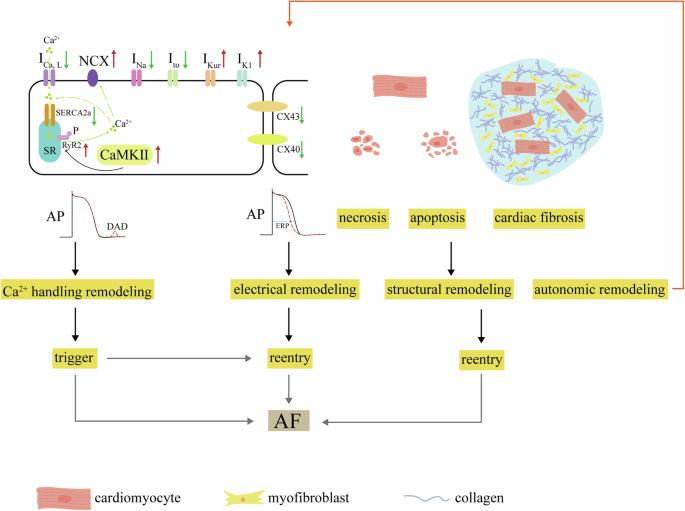Recent advances in understanding the roles of T cells in atrial fibrillation
引用次数: 0
Abstract
Atrial fibrillation (AF) is a common arrhythmia associated with severe outcomes like heart failure and stroke. Recent studies highlight the crucial role of T in AF. Clinical studies have observed elevated levels of CD4+CD28null T cells, Th17/Treg cells, CD8+ cells, and related markers in the peripheral blood or atrial tissue of AF patients, correlating with disease severity and cardiovascular events. These T cell subsets contribute to AF through: (1) releasing inflammatory factors like TNF-α and IL-17 which affect calcium homeostasis and electrical activity in atrial myocytes and/or promote atrial fibrosis; (2) recruiting inflammatory cells such as macrophages, causing local inflammation, oxidative stress, and atrial remodeling; (3) secreting cytotoxic proteins like perforin and granzymes, inducing apoptosis in atrial myocytes and affecting their action potentials; (4) direct contact, influencing atrial myocyte electrophysiology. Understanding these T cell-mediated mechanisms may uncover new therapeutic targets for AF.

了解 T 细胞在心房颤动中的作用的最新进展
心房颤动(房颤)是一种常见的心律失常,与心力衰竭和中风等严重后果相关。最近的研究强调了 T 在心房颤动中的关键作用。临床研究观察到,房颤患者外周血或心房组织中的 CD4+CD28 空 T 细胞、Th17/Treg 细胞、CD8+ 细胞及相关标记物水平升高,与疾病严重程度和心血管事件相关。这些 T 细胞亚群通过以下方式导致心房颤动:(1) 释放 TNF-α 和 IL-17 等炎症因子,影响心房肌细胞的钙稳态和电活动,和/或促进心房纤维化;(2) 招募巨噬细胞等炎症细胞,引起局部炎症、氧化应激和心房重塑;(3)分泌穿孔素和颗粒酶等细胞毒性蛋白,诱导心房肌细胞凋亡并影响其动作电位;(4)直接接触,影响心房肌细胞电生理学。了解这些 T 细胞介导的机制可能会发现治疗心房颤动的新靶点。
本文章由计算机程序翻译,如有差异,请以英文原文为准。
求助全文
约1分钟内获得全文
求助全文

 求助内容:
求助内容: 应助结果提醒方式:
应助结果提醒方式:


